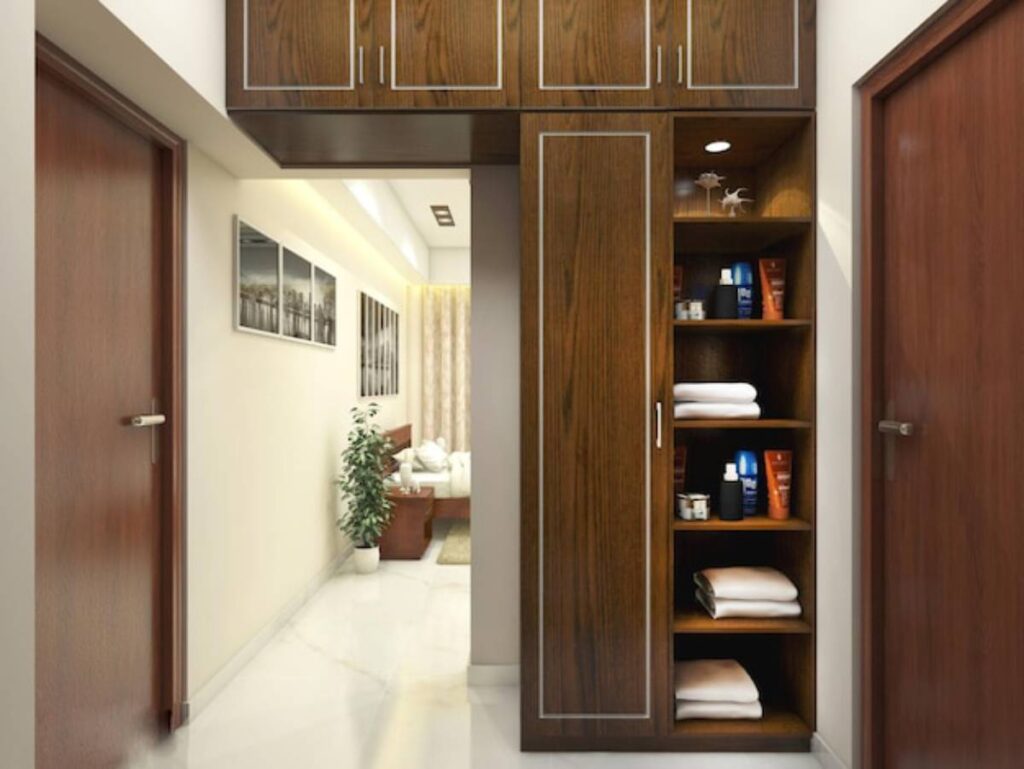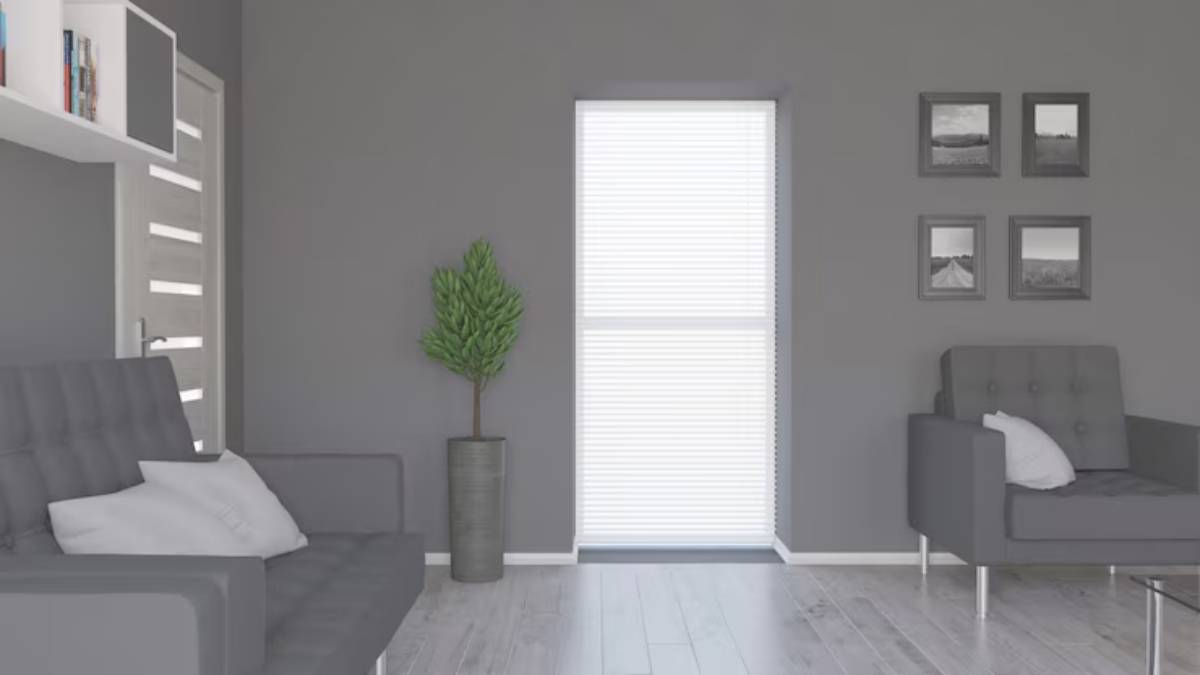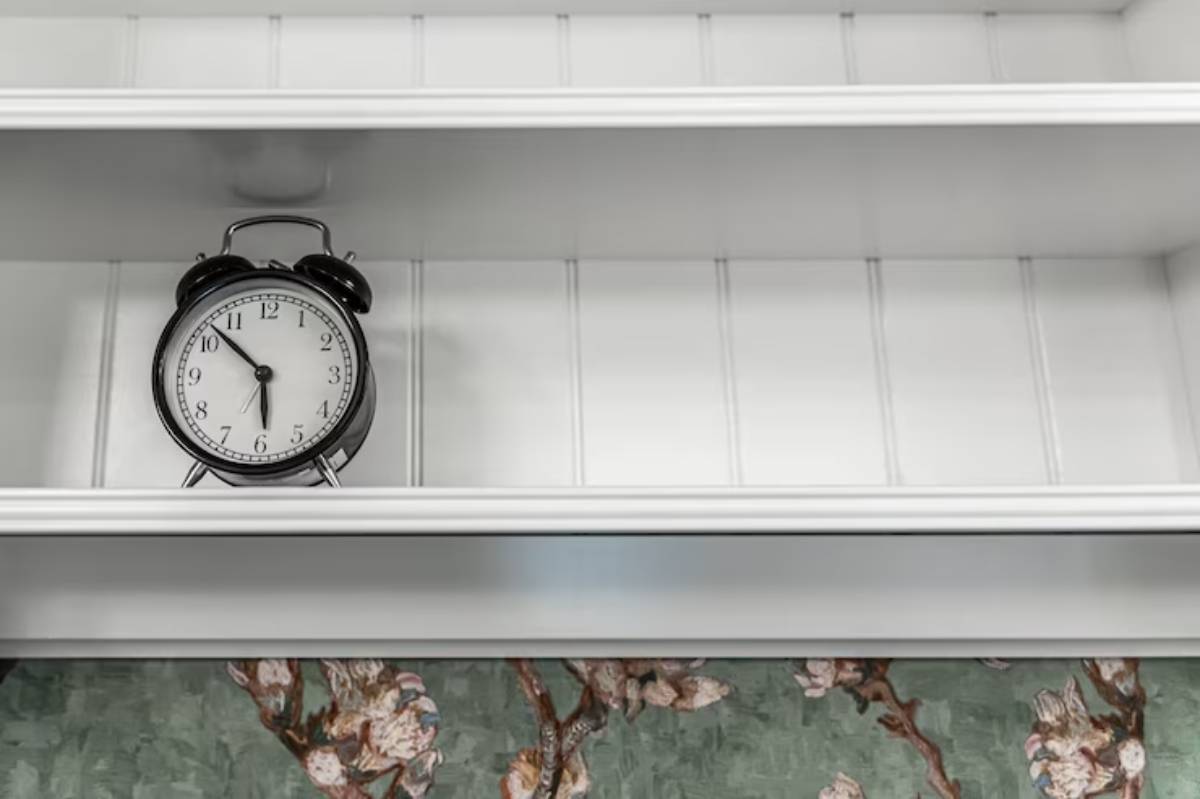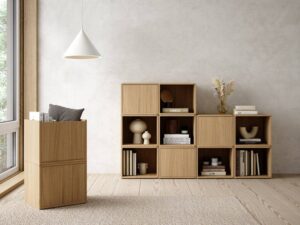The Interior Design Blog

How to Maximise the Area Above Door Frames
When we think about storage in small homes, we usually look under the bed, inside the sofa, or behind cupboard doors. But there’s one prime spot that’s often completely overlooked:the space above your doors. It’s easy to ignore — sitting high up, often empty, and usually out of our direct line of sight. But once you tap into this vertical goldmine, you’ll wonder why you left it bare for so long.
Whether you’re in a tiny flat, a converted loft, or simply want to declutter your main living areas, above-door storage is one of the smartest ways to squeeze more functionality out of your space. With the right tools and a little creativity, you can add both beauty and utility to an area you barely noticed before.
In this guide, we’ll cover why this zone matters, what kinds of storage work best, and how to integrate shelving in a way that complements your home’s look and flow. You’ll leave with actionable vertical shelf tips and a new appreciation for what smart storage can do.
Why the Space Above Doors is a Storage Goldmine
Vertical Space Is Often Wasted

In most homes, wall space ends where the top of the doorframe begins. The area between that and the ceiling? It’s dead space, despite often being 12 to 24 inches of unused vertical height.
That’s more than enough room to:
- Install a floating shelf
- Mount a cabinet or closed unit
- Fit a decorative yet practical ledge
If you’re already making the most of often-ignored zones, like storage ideas for the space under your stairs, this approach will feel like a natural extension of your smart home strategy.
Ideal for Tight and Transitional Spaces
Above-door storage is particularly useful in:
- Hallways – where floor space is narrow and precious
- Bathrooms – for storing overflow toiletries or linens
- Laundry cupboards – to stash cleaning products out of reach
- Home offices – perfect for archiving documents or stationery
- Bedrooms – ideal for books, boxes, or off-season items
In homes where walls are already working overtime with hooks and hangers, lifting storage upwards can restore balance without increasing visual clutter.
Types of Above-Door Storage That Actually Work
1. Simple Floating Shelves
The most accessible option — and often the most versatile — is a floating shelf directly above the doorframe.
These work well with:
- Decorative boxes or baskets for seasonal items
- Books to create a cosy, library-like feel
- Plants or ceramics, if you’re leaning into style
Just be sure to install shelves using wall anchors or studs, especially if you’re placing them above regularly used doors.
2. Closed Cabinets or Mini Cupboards
If you prefer a cleaner look or want to store things out of sight, go for slim cupboards or lift-up cabinet doors mounted above the frame. These:
- Keep dust out
- Hide less attractive items (like tools or cables)
- Blend seamlessly with kitchen or bathroom cabinetry
This design can work beautifully above utility room doors or inside wardrobes — giving you concealed space without sacrificing accessibility.
3. Extended Trim or Architectural Ledges
For period or traditional homes, a ledge shelf styled as part of the trim or crown moulding can be a stylish way to incorporate storage without disrupting the design.
These work best when:
- Painted to match the surrounding woodwork
- Used sparingly for light items
- Styled with symmetry (think matching baskets or books)
They’re particularly effective in heritage homes where every detail counts — and modern shelving would feel out of place.
Creative Use Cases for Real Homes
It’s easy to understand the concept of above-door storage, but how does it play out in real homes? Here are a few ideas from small-home dwellers who’ve made it work.
In the Bathroom
Eleanor, who shares a one-bed flat with her partner, installed a reclaimed wood shelf above their bathroom door. “It holds our spare towels, soaps, and guest items,” she says. “It’s out of the way but within reach — and we didn’t lose any floor space.”
In the Home Office
Freelancer Marcus added shelves above his home office door for document storage. “All my archived files are up there. It keeps my workspace looking clean, but I know exactly where to find old contracts or reference notes.”
In the Entryway
Clare uses above-door shelves to store shoes she rarely wears — like hiking boots or winter wellies — in labelled boxes. “We don’t have a coat cupboard, so I had to think vertically,” she laughs. “Now, everything’s neat and nothing’s on the floor.”
Designing for Function and Flow
Think About What You’ll Store
Above-door storage is best suited to items that are:
- Lightweight
- Not used daily
- Easy to lift and retrieve
Some good candidates include:
- Extra bedding or towels
- Seasonal clothes
- Board games
- Partyware or extra kitchen items
- Pet supplies
- Craft or hobby materials
Avoid storing anything fragile or heavy — this space is about convenience, not overloading.
Choose the Right Shelf Depth

A common mistake is using shelves that are too deep. Stick to 20–30cm (8–12 inches) to avoid the shelf looking too bulky or throwing off the room’s proportions.
Keep in mind:
- Shallow shelves = easier access
- Deeper shelves = potential visual clutter if not styled carefully
- Closed storage = better dust protection, but needs more clearance
If the door is very tall or opens inward, check that your shelf doesn’t obstruct movement.
Style Tips to Keep It Looking Beautiful
Just because it’s storage doesn’t mean it has to be boring. Use these visual cues to keep your above-door shelving stylish, not slapdash.
Consistency is Key
- Use matching containers or baskets for a uniform look
- Align colours and textures with the room’s palette
- Mirror symmetry — if you add a shelf over one door, consider doing the same across the room
Blend with the Architecture
If possible, paint brackets and shelves to match the wall colour or the surrounding trim. This helps them blend in — or stand out, depending on your goal.
- Want them to disappear? Match colours
- Want a feature element? Choose contrast and clean lines
Don’t over-style — a few well-chosen items or containers keep the space functional and appealing.
Safety First: What You Should Know Before Installing
Above-door shelves and storage are safe if properly installed.
Here’s what to keep in mind:
- Always use wall plugs or anchor systems; don’t rely on plaster alone
- Check the load capacity for brackets or cabinetry
- If you’re installing over a fire door, check with your building’s safety guidelines — some areas restrict drilling above structural doors
- For rented homes, use tension shelving, adhesive brackets, or freestanding options where possible
And remember: nothing stored overhead should be dangerous if it falls. Keep breakables and valuables out of reach or stored elsewhere.
Combining Above-Door Storage with Other Smart Hacks
Above-door shelving pairs beautifully with other vertical or hidden storage solutions.
For instance:
- Mount a full-length mirror with a concealed jewellery compartment beside the door
- Install hooks or peg rails below for bags or coats
- Use a storage bench under the door frame to double up on usable space
- Integrate the area into a larger wall system, like those seen in how to use your wall space like a pro organiser
Layering storage like this is the secret to making small homes work smarter, not harder.
Conclusion: Look Up, Think Smart
Sometimes the smartest solutions are right above us — literally. By transforming the unused space above your doors into purposeful storage, you reclaim valuable real estate without adding bulk or clutter. It’s discreet, stylish, and incredibly functional — especially in smaller homes where every detail counts.
Whether you opt for a rustic floating shelf, sleek cabinetry, or a carefully styled ledge, your above-door storage can make a surprisingly big impact. And once you’ve made the leap to vertical storage, you’ll start seeing opportunities everywhere.
So next time you’re reorganising, decluttering or just feeling short on space, look up — your next great storage spot might be waiting quietly above the door.









